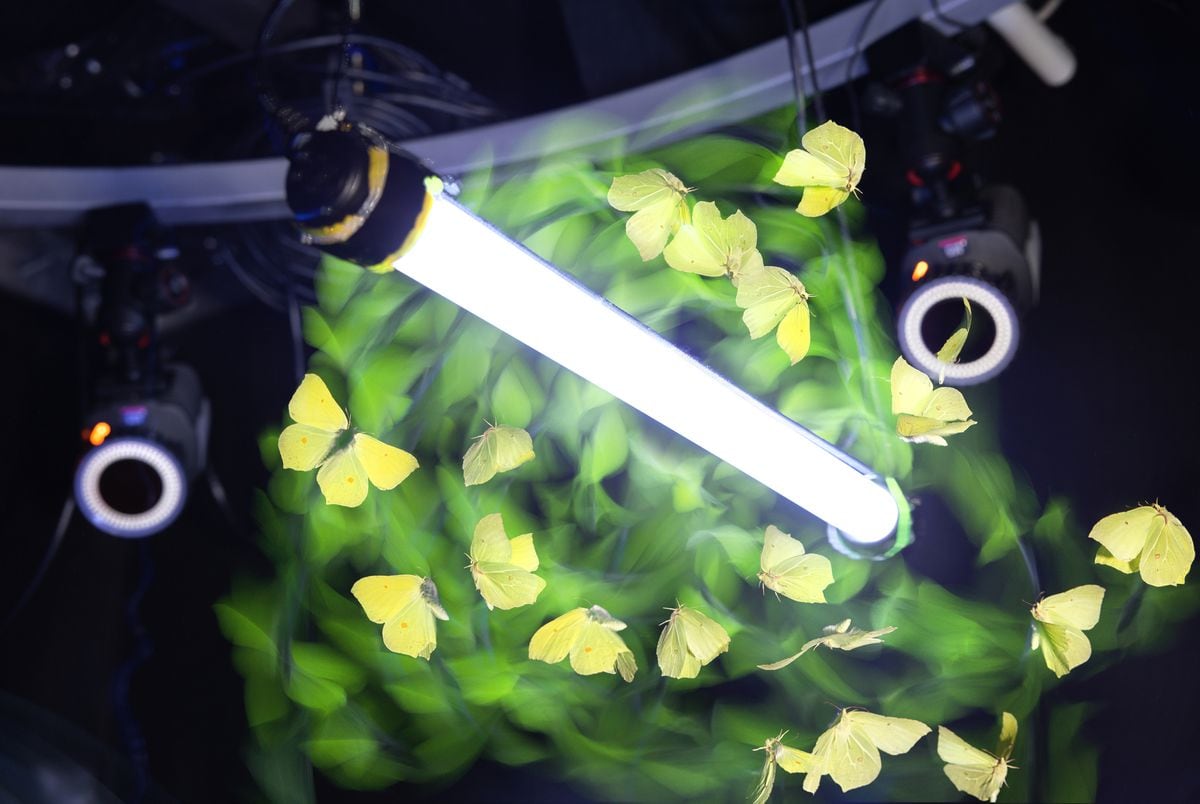A familiar sight, especially in summer, is that of moths and mosquitoes collecting around the bulbs.
The attraction of flying insects to lighting has been known for a long time, so much so that there are even written records from the Roman Empire describing the use of light to catch them.
What is not clear is why they do it.
Previous scientific research has proposed that they interpret the flashes as an escape route, or that they are blinded by the lighting source.
In a study published today in
Nature Communications
, the authors suggest that artificial light affects the ability of insects to orient themselves correctly toward the horizon, which could explain their change in behavior when faced with human lighting.
British zoologist Samuel Fabian, along with his colleagues at Imperial College London, installed cameras in his garden to track the flight of a variety of moths, dragonflies and fruit flies under different lighting conditions, including natural, artificial, ultraviolet, and direct and diffuse sources.
They also analyzed them under laboratory conditions.
They observed that when the animals were confronted with artificial light, they corrected their flight course so that their back was facing the illumination source—a phenomenon known as the dorsal light response—and experienced vertigo and unexpected changes in their trajectory.
On the contrary, when the insects were exposed to the sun's rays, their response was adequate, maintaining a constant and orderly flight.
More information
These plants have shrunk their flowers and are doing without their pollinators
The dorsal light response, explains Fabian, is due to the fact that when flying “it is not always easy to determine where is up.”
Orientation is essential for them, since they guide their flight through a stabilization system that is based on turning their back to the light to locate the sun or the most illuminated hemisphere, and thus decipher which is the sky and which is below.
The artificial light generates confusion and makes them lean their bodies towards it, causing them to fly in circles, as is common to see them near streetlights.
Fabian, a researcher of insect behavior and physiology, points out that his discovery changes the narrative of how insects reach streetlights at night.
“We don't see insects going directly towards the lights because they simply love them, but because artificial light corrupts a behavioral mechanism that is probably older than the dinosaurs,” says the British scientist.
For this zoologist, the next big question is the distance at which the effect begins to occur.
The data they currently have indicates that the alteration occurs approximately two meters around the light source: “We do not know what is happening at 20, 100 meters or a kilometer,” and points out that understanding this would be crucial to reduce the effect. of light pollution in nocturnal wildlife.
Negative effects
Endless orbiting has a fatal result for these animals.
They often fly until they die from exhaustion, lose orientation and fall lethally to the ground or become easier prey for predators.
And his death has consequences for the environment.
A group of African moon moths congregate next to an artificial light source.Thomas Angus
Alejandro Sánchez de Miguel, an astrophysicist at the Complutense University of Madrid, who studies light pollution, explains that habitat loss is the main cause of death of insects.
However, artificial light is also a risk factor and has various negative effects on them.
For example, nocturnal animals abandon their vital functions due to the time they spend circling the light bulbs;
and in diurnal insects, permanent lighting prolongs their period of activity for much longer.
The consequences also reach humans.
Nighttime lighting attracts mosquitoes, which carry disease.
In places where Nile fever or malaria diseases are abundant, cases skyrocket when permanent night lighting is installed.
Both the author of the study and the astrophysicist agree that insect habitats must be improved.
Sánchez de Miguel recognizes that it is impossible to stop using lights in cities, but conscious consumption is possible to avoid unnecessary lighting at night.
After all, the astrophysicist points out, “altering natural conditions never comes free.”
You can follow
MATERIA
on
,
X
and
, or sign up here to receive
our weekly newsletter
.

